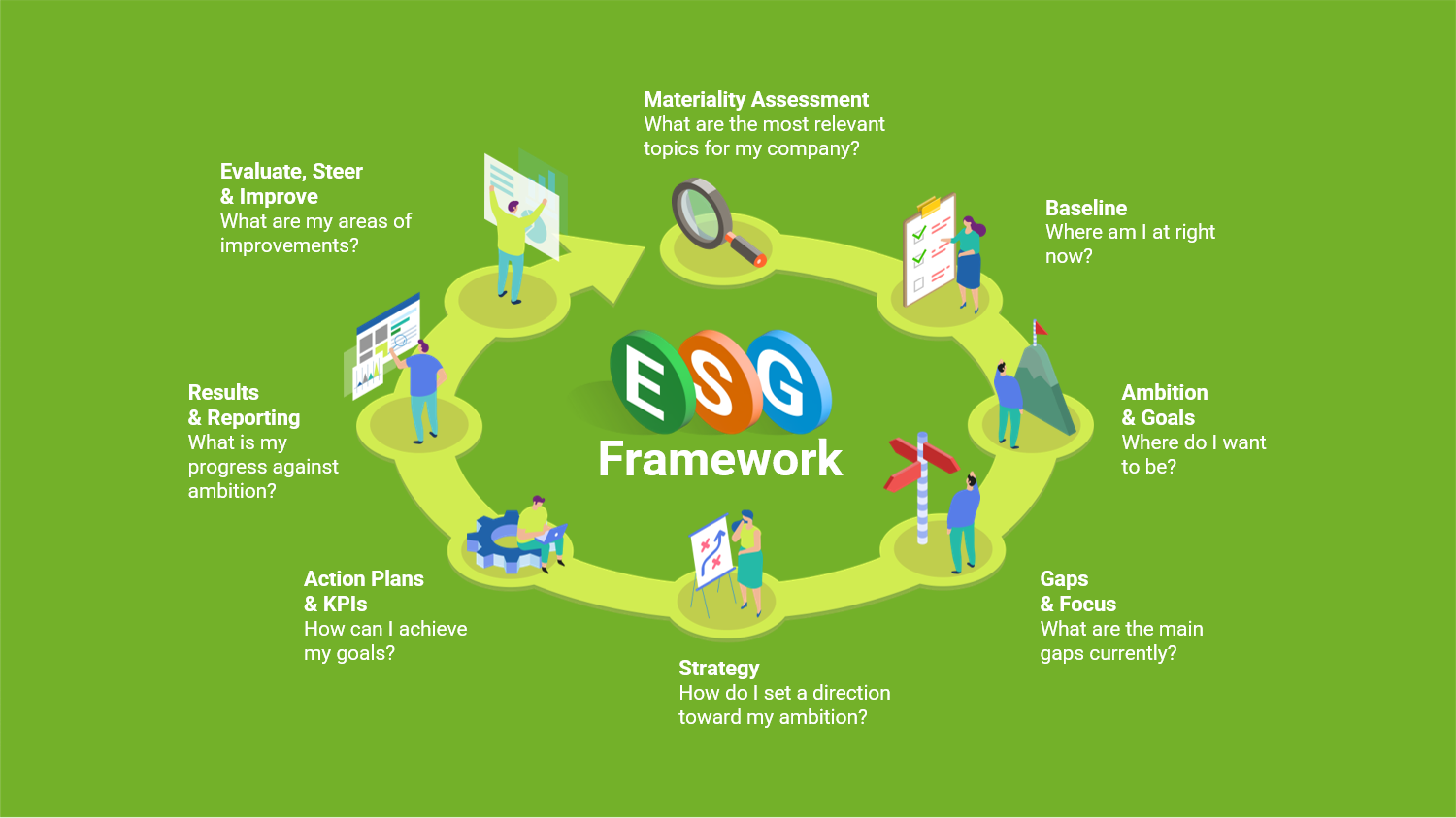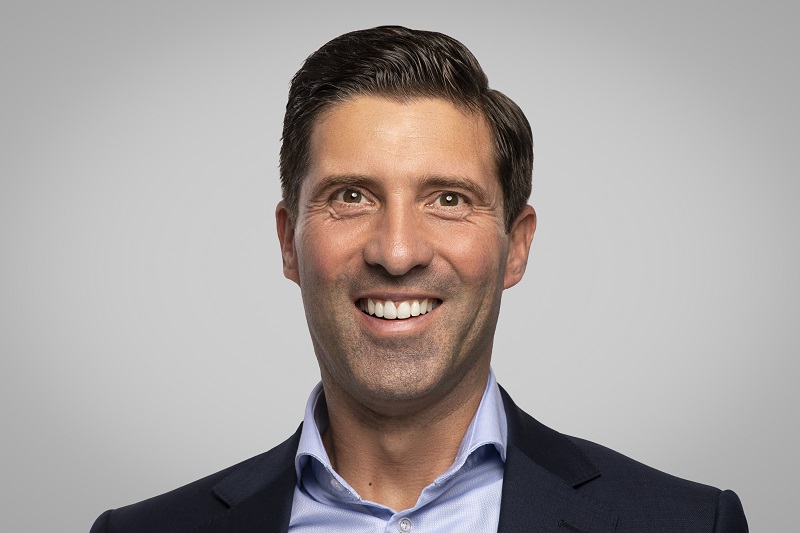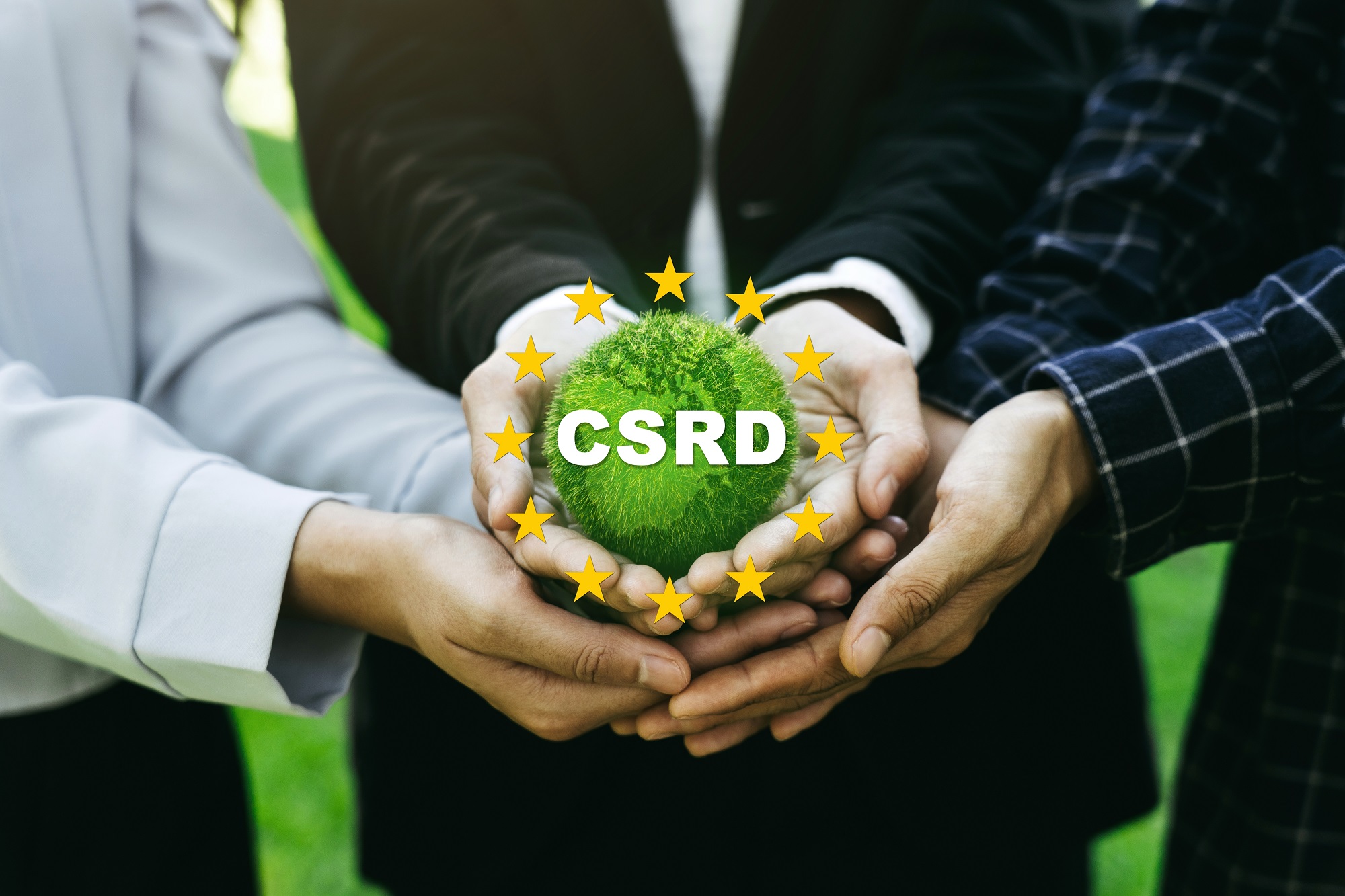ESG Phase 2: baseline, ambitions and focus areas
To achieve a sustainable future for your organisation, you need to plan for it. Your organisation needs a strategy, targets and ambitions that address how you can work towards a sustainable situation. Where to start? Baker Tilly can help you with your ESG framework. In four phases we work towards an integrated strategy. In Phase 2 of the ESG framework, we examine the starting point and your sustainability ambitions.
ESG framework
Carrying out a baseline inventory, setting ambitions and goals, and identifying gaps and focus areas are all part of the second phase of the ESG framework that Baker Tilly has developed. In total, there are four phases, divided into eight steps. Based on these phases, we work towards an integrated strategy and your sustainability report, one step at a time.
Formulating goals and ambitions
After setting up and validating the materiality matrix [hyperlink to Phase 1], you enter the next phase of the ESG framework. This second phase is all about determining and formulating your organisation’s long-term ambitions and goals. This involves examining the key themes from the materiality analysis: where is your organisation now and where do you want to go? What are your strengths and opportunities for improvement? Are there areas that you would like to excel in?
At Baker Tilly, we believe that focus is the most important thing when it comes to being successful in everything you do. We help you to determine your focus areas based on what drives you, your opportunities and risks. For these focus areas, we examine where you stand compared to your peers. So the question for you is, what are your ambitions? To round off Phase 2, we carry out a gap analysis and use it in Phase 3 to formulate a long-term strategy with practical action plans. Based on this information, we determine the gaps: the distance between where you are now versus where you want to go.
Starting point in Phase 2: the baseline inventory
The baseline inventory entails examining where the organisation currently stands for each topic from your materiality analysis. For each topic, we look at, among other things, your vision, ambition, strategy and policy. We also check whether you already have programmes going when it comes to sustainability.
A baseline inventory is not only a good place to start for your sustainability strategy, it also provides valuable insights into the information available at your organisation. It shows you what information you have, where the information is in the systems and how it is created. This not only helps you to determine the reliability of this data, it also reveals what information is still missing.
Maturity scan
To support you in analysing your ‘ESG maturity’, Baker Tilly has developed a methodology based on the ISO-26000 standard. This maturity scan helps you to assess your organisation in terms of the following seven key themes:
management;
human rights;
working relationships and conditions of employment;
the environment;
supplier relationships;
consumer-related issues;
community involvement.
This gives you a clear view of your social responsibility from an external perspective as well as an idea of your strengths and weaknesses. By carrying out this analysis periodically, you can monitor the progress of your sustainability approach on an ongoing basis.
From baseline to ambition
The CSRD stipulates that your sustainability strategy has to be in line with the goals of the Paris Climate Agreement. Determining the level of ambition and setting goals will help you identify opportunities, risks and areas for improvement at your organisation. It reveals what your company’s position is vis-à-vis your competitors, and clarifies how much you are willing to invest in your sustainability strategy.
At the same time, sustainability targets have to be realistic and measurable, so that you can report on them properly. They also have to be inspiring for your clients, staff and other stakeholders.
Determining carbon emission
In this phase, you probably want to determine your current carbon emission levels. And not just your organisation’s own, immediate footprint, but also the ‘Scope 3 emissions’: the emissions associated with your suppliers and customers. Our experts are happy to help you calculate your overall footprint and support you directly by creating an action plan to reduce emissions.
How we help you to determine your ambitions and goals
At Baker Tilly, we help you determine the level of ambition that matches your organisation’s vision and DNA, and we do so based on your business model, sector and value chain. You determine the level of your ambition based on your areas of focus, and we then formulate your action plans and targets together.
Gaps and focus: what lies between your baseline and ambitions?
There may well be a gap between the baseline you have established and the ambitions you have formulated. We examine those gaps together to examine which themes require action on your part.
Once you have a clear understanding of the gaps that need to be bridged and the resources your organisation will have to make available to achieve this, it’s time to move on to the next phase of the ESG framework: setting the strategy.






